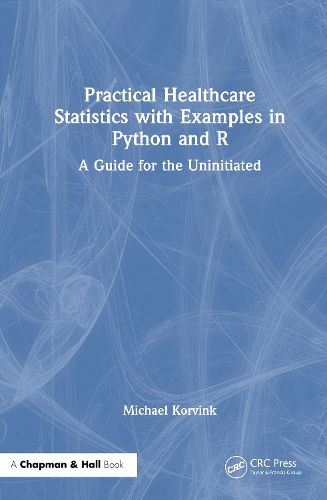Readings Newsletter
Become a Readings Member to make your shopping experience even easier.
Sign in or sign up for free!
You’re not far away from qualifying for FREE standard shipping within Australia
You’ve qualified for FREE standard shipping within Australia
The cart is loading…






Practical Healthcare Statistics with Examples in Python and R provides a clear and straightforward introduction to statistical methods in healthcare. Designed for recent graduates, new analysts, and professionals transitioning into healthcare analytics, it offers practical guidance on tackling real-world problems using statistical concepts and programming.
The book is divided into three primary sections. The first section provides an introduction to healthcare data and measures. In these chapters, readers will learn about the nuances of administrative claims and electronic health records, as well as common industry measures related to quality and efficiency of care. The second section will cover foundational techniques, such as hypothesis testing and regression analysis, as well as more advanced approaches, like generalized additive models and hierarchical models. In the last section, readers will be introduced to epidemiological techniques such as direct and indirect standardization, measures of disease frequency and association, and time-to-event analysis.
The book emphasizes interpretable methods that are both effective and easy to communicate to clinical and non-technical stakeholders. Each technique presented in the book is accompanied by statistical notation described in plain English, as well as a self-contained example implemented in both Python and R. These examples help readers connect statistical methods to real healthcare scenarios without requiring extensive programming experience. By working through these examples, readers will build technical skills and a practical understanding of how to analyze healthcare data.
These methods are not only central to improving patient care but are also adaptable to other areas within and beyond healthcare. This book is a practical resource for analysts, data scientists, health researchers, and others looking to make informed, data-driven decisions in healthcare.
$9.00 standard shipping within Australia
FREE standard shipping within Australia for orders over $100.00
Express & International shipping calculated at checkout
Practical Healthcare Statistics with Examples in Python and R provides a clear and straightforward introduction to statistical methods in healthcare. Designed for recent graduates, new analysts, and professionals transitioning into healthcare analytics, it offers practical guidance on tackling real-world problems using statistical concepts and programming.
The book is divided into three primary sections. The first section provides an introduction to healthcare data and measures. In these chapters, readers will learn about the nuances of administrative claims and electronic health records, as well as common industry measures related to quality and efficiency of care. The second section will cover foundational techniques, such as hypothesis testing and regression analysis, as well as more advanced approaches, like generalized additive models and hierarchical models. In the last section, readers will be introduced to epidemiological techniques such as direct and indirect standardization, measures of disease frequency and association, and time-to-event analysis.
The book emphasizes interpretable methods that are both effective and easy to communicate to clinical and non-technical stakeholders. Each technique presented in the book is accompanied by statistical notation described in plain English, as well as a self-contained example implemented in both Python and R. These examples help readers connect statistical methods to real healthcare scenarios without requiring extensive programming experience. By working through these examples, readers will build technical skills and a practical understanding of how to analyze healthcare data.
These methods are not only central to improving patient care but are also adaptable to other areas within and beyond healthcare. This book is a practical resource for analysts, data scientists, health researchers, and others looking to make informed, data-driven decisions in healthcare.